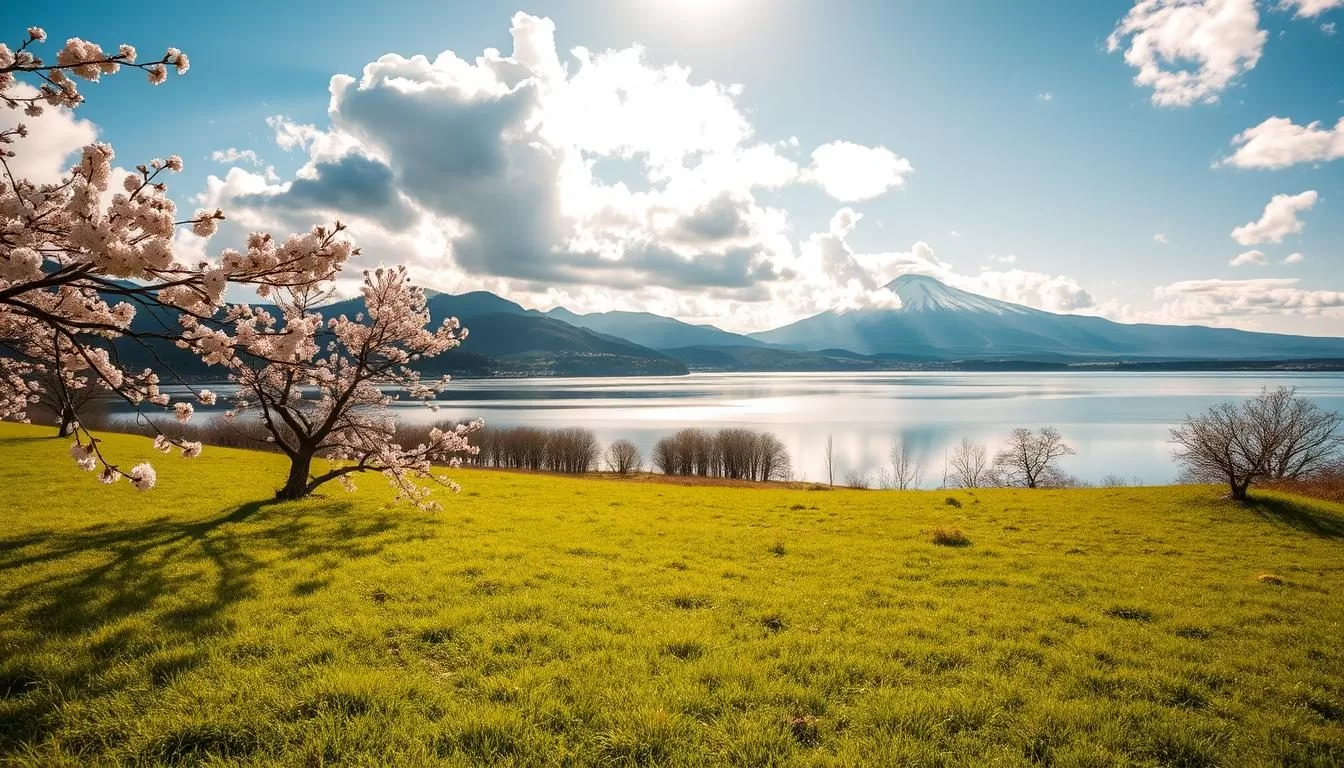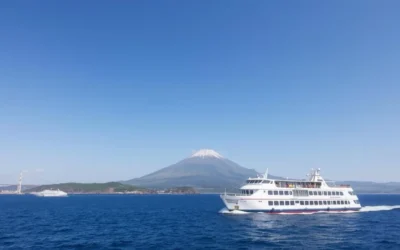✓ Accommodations✓ Flights✓ Rental Cars
Planning a trip to Kanagawa Prefecture can be a thrilling experience, with its unique blend of traditional Japanese culture and modern attractions.
Understanding the weather patterns is crucial to making the most of your visit. The region offers distinct seasons, each with its own charm, from the beautiful cherry blossoms in spring to the vibrant fall foliage and snowy winter landscapes.
As you prepare for your trip, this guide will help you determine the ideal time to visit based on weather conditions, crowd levels, and seasonal attractions, ensuring a memorable experience.
Discovering Kanagawa Prefecture: Japan’s Coastal Gem
Located on the eastern coast of Honshu, Japan’s largest island, Kanagawa Prefecture is a treasure trove of natural beauty and cultural heritage. As you plan your trip to this fascinating region, understanding its geography and climate is essential.
Geographic Location and Major Cities
Kanagawa Prefecture is part of the Kantō region, bordered by Tokyo to the north, and is known for its diverse landscapes, from coastal areas to mountainous regions. Major cities include Yokohama, Kawasaki, and Kamakura, each offering unique experiences. 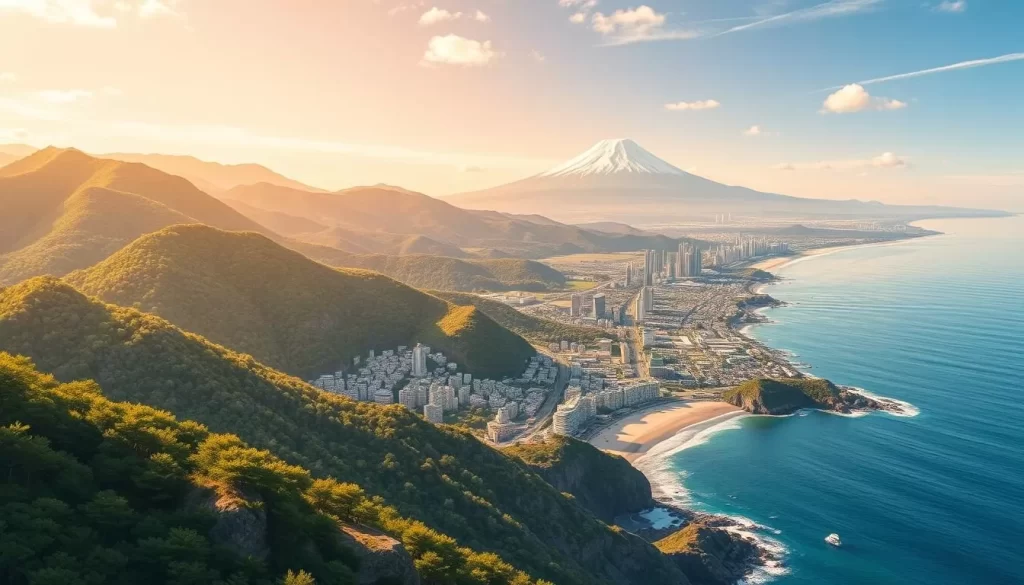
| City | Main Attractions | Weather Characteristics |
|---|---|---|
| Yokohama | Minato Mirai 21, Chinatown | Mild climate, moderate rainfall |
| Kamakura | Great Buddha, Tsurugaoka Hachiman Shrine | Cooler summers, mild winters |
| Kawasaki | Todoroki Valley, Kawasaki Daishi | Similar to Yokohama, with slight variations |
Why Weather Matters When Visiting Kanagawa
The weather significantly impacts your travel experience in Kanagawa, influencing the accessibility of attractions and the enjoyment of seasonal events. Certain iconic experiences, like viewing cherry blossoms or autumn foliage, are entirely dependent on specific seasons and time. Understanding these factors helps you plan your trip effectively.
- Weather affects the accessibility of certain attractions and events.
- Seasonal experiences like cherry blossoms and autumn foliage are weather-dependent.
- Different regions within Kanagawa have varied weather patterns.
Understanding Kanagawa’s Climate Patterns
To make the most of your visit to Kanagawa, it’s essential to grasp the local climate patterns. Kanagawa Prefecture experiences a range of weather conditions throughout the year, making it a fascinating destination for travelers.
Four Distinct Seasons in Kanagawa
Kanagawa has four distinct seasons, each offering a unique experience. Spring brings mild temperatures and beautiful cherry blossoms, while summer can be warm and humid. Autumn is characterized by comfortable temperatures and vibrant foliage, and winter can be cool to cold, with occasional rain.
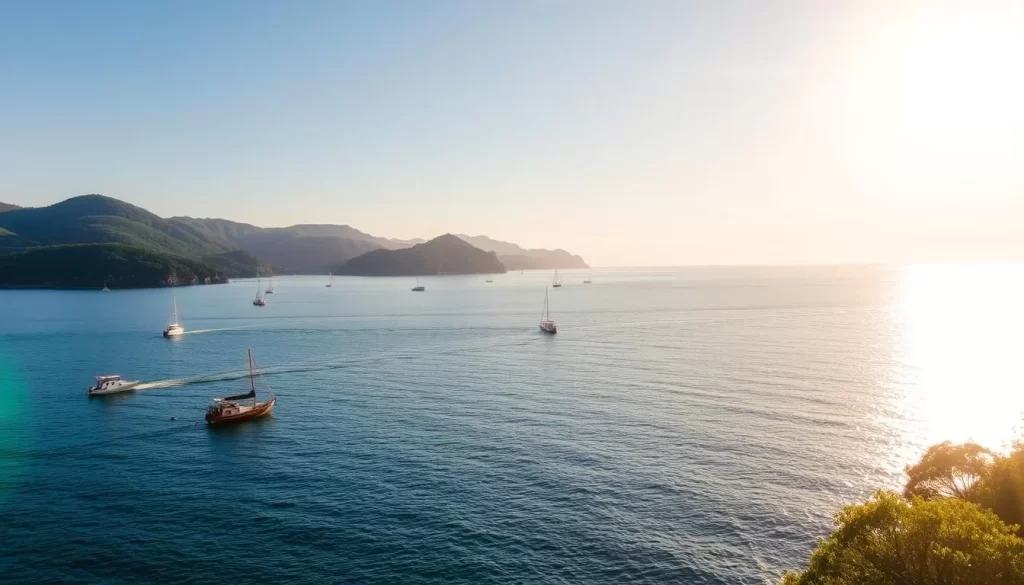
How Kanagawa’s Weather Differs from Tokyo
While Kanagawa shares many climate similarities with neighboring Tokyo, there are notable differences. Kanagawa’s coastal areas often experience slightly milder temperatures than Tokyo due to the moderating effect of the ocean. The mountainous regions, particularly around Hakone, are typically cooler and receive more precipitation. Understanding these subtle climate differences can help you choose between staying in Tokyo or Kanagawa during different seasons.
- Kanagawa’s coastal areas have milder temperatures than Tokyo.
- The mountainous regions are cooler and receive more precipitation.
- Sea breezes in Kanagawa’s coastal cities provide relief from summer heat.
Spring in Kanagawa: Cherry Blossom Paradise
As spring awakens, Kanagawa transforms into a vibrant paradise, captivating visitors with its breathtaking beauty. The season brings mild weather, making it an ideal time to explore this Japanese prefecture.
Late March to Early April: Peak Cherry Blossom Season
The highlight of spring in Kanagawa is undoubtedly the cherry blossoms. During late March to early April, the prefecture is painted with vibrant hues as the cherry blossoms reach their peak.

Kanagawa offers numerous spots for spring viewing, each providing a unique experience amidst the blossoming trees.
May: Perfect Temperatures and Fewer Crowds
As the cherry blossom season concludes, May ushers in a new wave of pleasant weather, characterized by warm days, low humidity, and abundant sunshine. After Golden Week, the crowds dissipate, offering a more relaxed experience at major attractions.
- May brings some of the most pleasant weather conditions to Kanagawa, with warm days, low humidity, and abundant sunshine.
- After Golden Week, crowd levels decrease significantly, offering a more relaxed experience at major attractions.
- Late spring flowers like wisteria and azaleas create new scenic landscapes throughout Kanagawa’s gardens and parks.
- May temperatures typically range from 60-75°F (15-24°C), perfect for exploring both coastal areas and mountain regions without weather constraints.
- This period offers excellent value for travelers, with lower accommodation rates than during cherry blossom season while still enjoying beautiful spring conditions.
Summer in Kanagawa: Festivals and Coastal Escapes
Summer in Kanagawa is a time of excitement, with festivals and coastal escapes galore. You can enjoy the heat of the season by participating in various summer activities that the region has to offer.
June: Hydrangea Season and Early Summer Events
June marks the beginning of summer in Kanagawa, with the hydrangea season in full bloom. Although it’s a time of increased rainfall, the region hosts various early summer events and festivals that you can enjoy. The heat starts to build up, but it’s still a great time to explore the outdoors.
July-August: Beach Activities and Summer Festivals
July and August represent peak summer in Kanagawa, characterized by hot and humid conditions with temperatures often exceeding 85°F (30°C). This period hosts Kanagawa’s most spectacular festivals, including the Yokohama Sparkling Twilight fireworks festival and numerous traditional Bon Odori dance events. You can enjoy activities like beach trips to Kamakura, Enoshima, and along Sagami Bay, or escape the heat by visiting mountain areas like Hakone.
Navigating Kanagawa’s Rainy and Typhoon Seasons
Kanagawa Prefecture experiences a significant rainy season followed by the threat of typhoons, which are key factors to consider when planning your visit. Understanding these weather patterns can help you make the most of your trip.
June-July: The Tsuyu Rainy Season
The Tsuyu, or rainy season, typically occurs from June to July in Kanagawa. During this period, frequent rain showers can impact outdoor activities. However, the rain also brings lush greenery and cooler temperatures, making it a unique time to visit. You should be prepared for wet weather by packing appropriate rain gear.
August-September: Typhoon Considerations
As summer transitions into autumn, Kanagawa is susceptible to typhoons from August to September. Typhoons can bring heavy rain and strong winds, potentially disrupting travel plans. It’s advisable to check the weather forecast regularly and have flexible itineraries. Between typhoon systems, you might experience “typhoon clarity,” characterized by exceptionally clear skies. 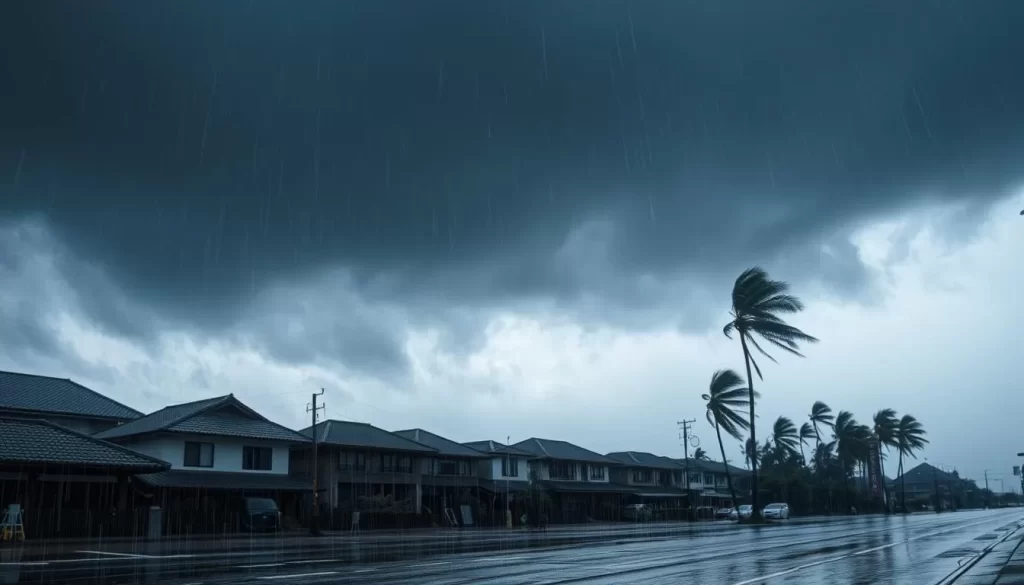
Autumn in Kanagawa: Vibrant Foliage and Comfortable Weather
Autumn in Kanagawa is a season of breathtaking beauty, with comfortable temperatures and stunning foliage. The radiant foliage of deciduous trees, from golden ginkgos to vermillion Momiji trees, lures crowds to ancient gardens and well-worn mountain trails.
September-October: Early Autumn Transitions
As summer fades, Kanagawa’s landscape begins to transition, with early autumn bringing subtle changes in foliage. While the peak colors have yet to arrive, the comfortable temperatures make it an ideal time for outdoor activities.
November: Peak Fall Foliage
November marks the peak of autumn colors in most of Kanagawa Prefecture, creating spectacular landscapes as maple, ginkgo, and other deciduous trees display vibrant red, orange, and gold foliage. Prime fall foliage viewing spots include:
- Hakone’s many parks and gardens
- The historic temples of Kamakura
- Yokohama’s Sankei-en Garden
Temperatures in November are comfortably cool, typically ranging from 45-60°F (7-15°C), perfect for outdoor exploration without summer’s heat or winter’s chill.
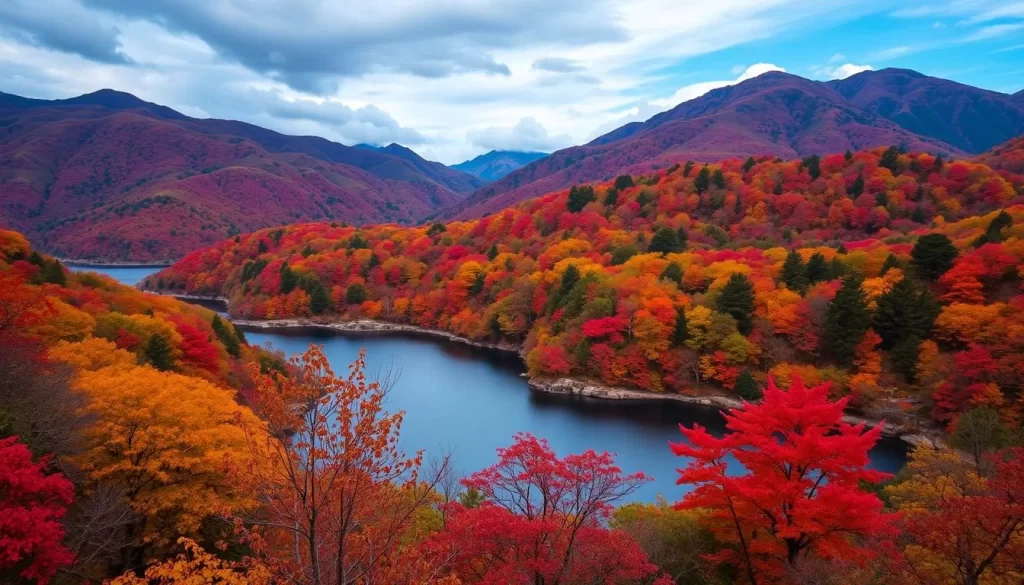
Winter in Kanagawa Prefecture: Serene Beauty and Hot Springs
The winter season brings a serene beauty to Kanagawa, with its picturesque landscapes and vibrant cultural events. You can experience the enchanting winter wonderland that Kanagawa Prefecture has to offer.
December-February: Winter Highlights and Snow Views
During the winter months, Kanagawa Prefecture offers a range of experiences. You can enjoy snow views in the mountainous areas, with February often bringing the heaviest snowfall to Hakone, creating picturesque winter landscapes. Meanwhile, coastal areas remain relatively mild, with comfortable temperatures.
Some of the top winter activities include visiting Kanagawa onsen resorts, which offer a perfect retreat from the cold. You can unwind and rejuvenate in natural hot springs, surrounded by serene winter landscapes.
New Year Celebrations and Winter Festivals
New Year (Oshogatsu) is one of Japan’s most important cultural celebrations, and Kanagawa’s temples and shrines host special events and rituals. You can participate in hatsumode (first shrine visit of the year) at popular shrines like Tsurugaoka Hachimangu Shrine in Kamakura and Hakone Shrine, attracting thousands of visitors.
- Experience the traditional Toshikoshi Soba, where locals eat soba noodles to usher in the New Year.
- Witness the Joya-no-kane, the ringing of New Year bells, a significant Buddhist ritual.
- Enjoy winter illumination events at various locations, including Yokohama’s Minato Mirai district and parts of Hakone, creating magical nighttime experiences.
Winter in Kanagawa offers unique cultural experiences and natural beauty that many international tourists miss by visiting during more popular seasons. You can discover the charm of Kanagawa during this lesser-crowded period.
Kanagawa Prefecture, Japan: Best Months for a Weather-Savvy Trip
Kanagawa Prefecture offers a range of experiences throughout the year, but some months are better than others for a weather-savvy trip. Understanding the climate and planning accordingly can make a significant difference in your travel experience.
March-May and October-November: The Ideal Weather Windows
The periods of March to May and October to November are considered ideal for visiting Kanagawa. Spring brings mild weather, perfect for enjoying the cherry blossoms and outdoor activities. In the fall, October and November offer pleasant temperatures and vibrant foliage, making these periods excellent for hiking and nature walks.
- Spring (March-May) is characterized by mild temperatures and the famous cherry blossoms.
- Autumn (October-November) brings comfortable weather and stunning fall foliage.
Weighing Weather Preferences Against Crowd Levels
When planning your trip, it’s crucial to balance your weather preferences with crowd levels. Peak tourism periods, such as cherry blossom season and New Year, offer unique experiences but come with larger crowds and higher prices. Visiting just before or after these peak seasons can provide a more relaxed experience with favorable weather.
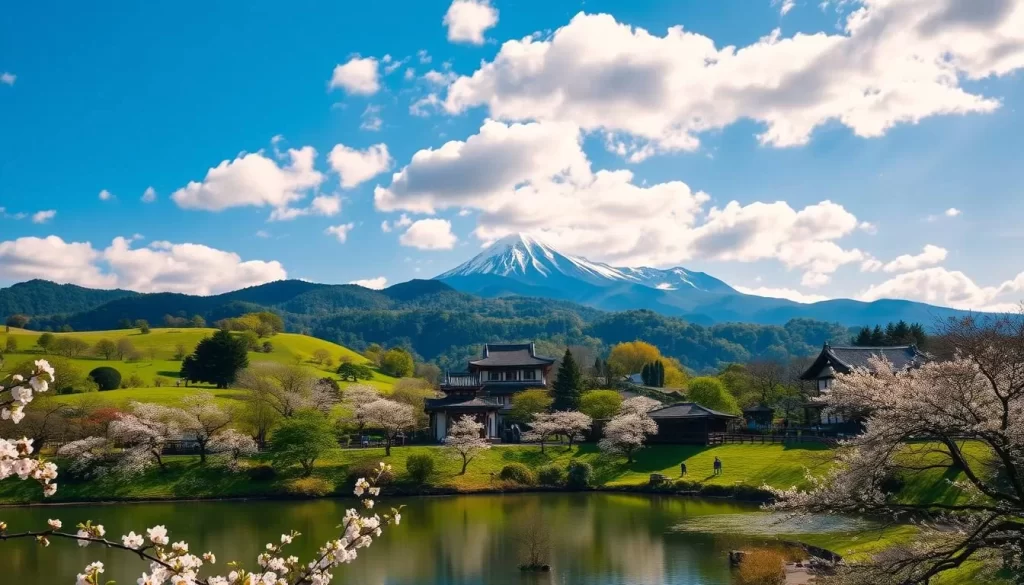
Top Weather-Dependent Attractions in Kanagawa
The weather plays a significant role in shaping the experiences you’ll have in Kanagawa’s top attractions. Whether you’re looking for natural beauty, cultural experiences, or outdoor activities, the right weather can make all the difference.
Hakone: Hot Springs and Mount Fuji Views
Hakone is a must-visit destination, offering a mix of natural hot springs and stunning views of Mount Fuji. The best way to enjoy Hakone is by timing your visit with the right weather, enhancing the beauty of its landscapes and the quality of your cultural experiences.

Kamakura: Temples and Beaches
Kamakura offers a unique blend of historical temples and beautiful beaches, with attractions like the Kamakura Cherry Blossom Festival in early April, where blossoms frame ancient temples. The city’s numerous temples and shrines, including the famous Great Buddha, are set against seasonal backdrops, from cherry blossoms to fall foliage, making it a great place to experience culture.
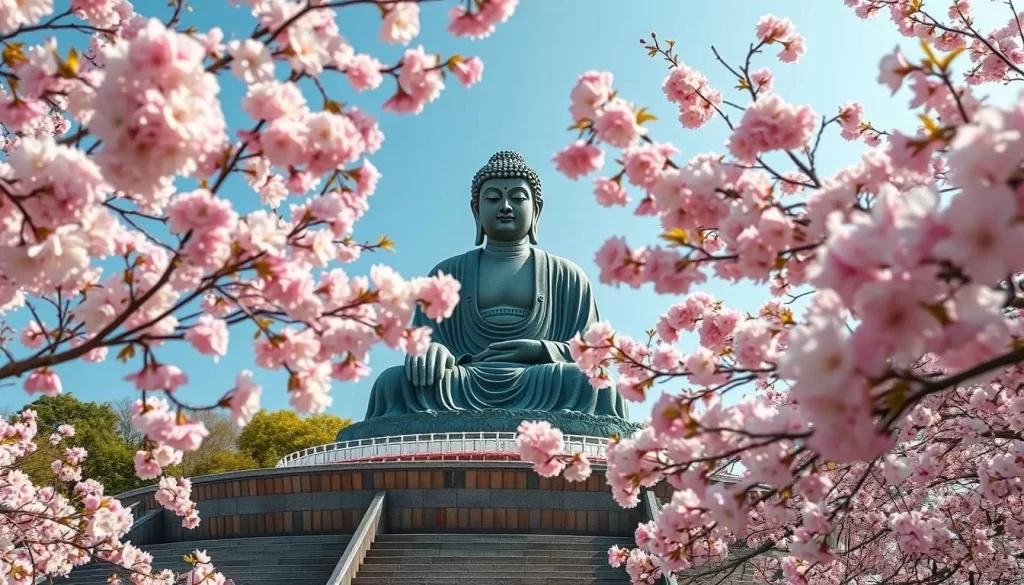
Conclusion
Whether you’re looking for cherry blossoms or hot springs, Kanagawa’s climate will guide your travel plans. Kanagawa Prefecture offers year-round appeal, with each season providing unique experiences. The best time to visit depends on your personal preferences, with spring and fall offering balanced weather conditions. By understanding the local weather patterns, you can plan a trip that maximizes your enjoyment. Planning your trip with weather considerations in mind will create a more enjoyable experience in this diverse Japanese prefecture, making the most of your time there throughout the year.
The above is subject to change.
Check back often to TRAVEL.COM for the latest travel tips and deals.
